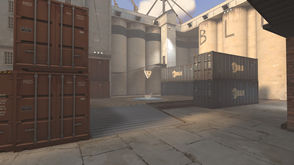Difference between revisions of "Granary Pro"
Jump to navigation
Jump to search
m (-stub) |
|||
| (6 intermediate revisions by 4 users not shown) | |||
| Line 1: | Line 1: | ||
| − | + | {{NewInfobox Map | |
| − | + | |name= | |
| − | + | |image= | |
| − | + | |caption= | |
| − | |||
| − | |||
| − | {{ | ||
| − | |||
| − | |||
| − | == | + | |maptype=5cp |
| − | + | |filename=cp_granary_pro2 | |
| + | |version=2 | ||
| + | |author1=Jon "Dagger" | ||
| + | |author1steam=76561198062441527 | ||
| + | |author2= | ||
| + | |author2steam= | ||
| + | |author3= | ||
| + | |author3steam= | ||
| + | |released=17 March 2015 | ||
| + | |updated=6 May 2018 | ||
| + | |official= | ||
| − | + | |gamemode1=6v6 | |
| + | |gamemode2= | ||
| + | |gamemode3= | ||
| + | |adapted=Granary | ||
| + | |pro= | ||
| + | |popularity=moderate | ||
| + | |lpleague= | ||
| + | |lpseason= | ||
| − | == | + | |download=http://dl.serveme.tf/maps/cp_granary_pro2.bsp.bz2 |
| − | + | |workshop=468558173 | |
| − | + | |tf2maps= | |
| + | |gamebanana= | ||
| + | |tftv=23574 | ||
| + | |tftv2= | ||
| + | |etf2l= | ||
| + | |ugc= | ||
| + | |officialwiki= | ||
| + | |officialwiki2= | ||
| − | = | + | |footnotes= |
| − | + | }} | |
| + | '''cp_granary_pro''' is a [[5CP]] map, created from the basis of [[cp_granary]], which was originally created by Valve. | ||
| − | + | ''Some of the tactics written on the default cp_granary may be applicable to this map.'' | |
| − | |||
| − | + | == History == | |
| + | '''cp_granary_pro''' is a map that was first created by Team Fortress 2 player, Mark. The map, created for the competitive community, featured small features that would make the map more convenient to its players; such as no roof over choke, and the removal of rocks & cones which had caused [[Glossary#Splash|splash]] damage absorption. | ||
| − | + | In the latest development of Granary Pro, changes in favour of competitive gameplay included expanding mid, removing props, raising the ceiling in choke and moving forward spawns backwards. | |
| − | |||
| − | |||
| − | |||
| − | == | + | == Usage in competitive == |
| − | + | {{Granary/MapLeagueInclusionTable}} | |
| − | + | == Map Locations == | |
| + | === Middle Point === | ||
| + | {{Map locations | ||
| + | | title = Granary Pro — The Middle Point (RED Perspective) | ||
| + | | image = Granary Pro Middle.jpeg | ||
| + | | area1 = Garage | x1 = 309px | y1 = 72px | ||
| + | | area2 = Choke | x2 = 620px | y2 = 40px | ||
| + | | area3 = Balcony / Catwalk | x3 = 479px | y3 = 14px | ||
| + | | area4 = Top Left / RED Crates | x4 = 308px | y4 = 118px | ||
| + | | area5 = Top Right / BLU Crates | x5 = 523px | y5 = 108px | ||
| + | | area6 = Back Left / RED Crates | x6 = 246px | y6 = 230px | ||
| + | | area7 = Back Right / BLU Crates | x7 = 559px | y7 = 238px | ||
| + | | area8 = Far Left | x8 = 177px | y8 = 277px | ||
| + | | area9 = Far Right | x9 = 588px | y9 = 154px | ||
| + | }} | ||
| − | + | === Second Point === | |
| + | {{Map locations | ||
| + | | title = Granary Pro — The Second Point, Top View (RED) | ||
| + | | image = Granary Pro Second Point 1.jpeg | ||
| + | | area1 = Choke | x1=142px | y1=4px | ||
| + | | area2 = Balcony | x2=338px | y2=21px | ||
| + | | area3 = Garage | x3=469px | y3=60px | ||
| + | | area4 = Left | x4=270px | y4=228px | ||
| + | | area5 = Yard | x5=550px | y5=228px | ||
| + | | area6 = Hut / Shack | x6=170px | y6=160px | ||
| + | }} | ||
| + | {{Map locations | ||
| + | | title = Granary Pro — The Second Point, Left Yard View (RED) (BLU Perspective) | ||
| + | | image = Granary Pro Second Point 2.jpeg | ||
| + | | area1 = Dropdown | x1=627px | y1=128px | ||
| + | | area2 = Z | x2=282px | y2=197px | ||
| + | | area3 = Spiral / To Lunchbox | x3=128px | y3=219px | ||
| + | | area4 = Garage | x4=772px | y4=220px | ||
| + | | area5 = Left / Yard | x5=258px | y5=250px | ||
| + | }} | ||
| + | {{Map locations | ||
| + | | title = Granary Pro — The Second Point, Inside View (RED) | ||
| + | | image = Granary Pro Second Point 3.jpeg | ||
| + | | area1 = Top | x1=88px | y1=70px | ||
| + | | area2 = Left | x2=100px | y2=264px | ||
| + | | area3 = Stairs / Spiral / Lunchbox | x3=317px | y3=285px | ||
| + | | area4 = Lobby Garage | x4=580px | y4=356px | ||
| + | }} | ||
| − | == | + | === Last Point === |
| − | + | {{Map locations | |
| − | + | | title = Granary Pro — The Last Point (RED) | |
| − | + | | image = Granary Pro Last Point.jpeg | |
| − | + | | area1 = Top Right / Window | x1=466px | y1=29px | |
| − | + | | area2 = Top Left | x2=342px | y2=38px | |
| − | + | | area3 = Left | x3=254px | y3=63px | |
| − | + | | area4 = Right | x4=493px | y4=98px | |
| − | + | | area5 = Crates | x5=225px | y5=164px | |
| − | + | | area6 = Tire | x6=551px | y6=171px | |
| − | + | | area7 = Upper Pipe | x7=439px | y7=194px | |
| − | + | | area8 = Lower Pipe | x8=324px | y8=223px | |
| + | | area9 = Right Spawn | x9=537px | y9=327px | ||
| + | | area10 = Left Spawn | x10=225px | y10=343px | ||
| + | | area11 = Last | x11=378px | y11=215px | ||
| + | }} | ||
| − | == | + | == External Links == |
| − | + | * [https://teamfortress.tv/thread/23574/cp-granary-pro TeamFortress.tv Thread] | |
| − | {{ | + | {{Active Maps Navbox}}{{All Maps Navbox|y}} |
| − | |||
| − | {{ | ||
| − | |||
| − | |||
| − | |||
| − | |||
| − | |||
| − | |||
| − | |||
| − | |||
| − | |||
| − | |||
Latest revision as of 15:32, 14 April 2020
Granary Pro
Map Information
Map Type:
File Name:
cp_granary_pro2Version:
2
Author:
First Released:
17 March 2015
Last Updated:
6 May 2018
Competitive Information
Game Modes:
Adapted From:
League Popularity:
Moderate
Total Inclusions:
6v6:
15 inclusions (13th)Links
cp_granary_pro is a 5CP map, created from the basis of cp_granary, which was originally created by Valve.
Some of the tactics written on the default cp_granary may be applicable to this map.
Contents
History[edit]
cp_granary_pro is a map that was first created by Team Fortress 2 player, Mark. The map, created for the competitive community, featured small features that would make the map more convenient to its players; such as no roof over choke, and the removal of rocks & cones which had caused splash damage absorption.
In the latest development of Granary Pro, changes in favour of competitive gameplay included expanding mid, removing props, raising the ceiling in choke and moving forward spawns backwards.
Usage in competitive[edit]
Bold italics denotes the current or latest season
| Official map | |
| Pro version |
Map Locations[edit]
Middle Point[edit]
| Granary Pro — The Middle Point (RED Perspective) |
|---|
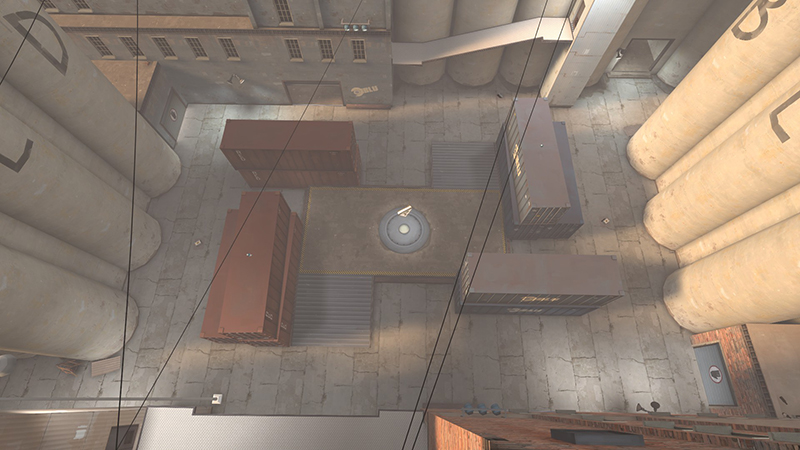
Garage Choke Balcony / Catwalk Top Left / RED Crates Top Right / BLU Crates Back Left / RED Crates Back Right / BLU Crates Far Left Far Right |
Second Point[edit]
| Granary Pro — The Second Point, Top View (RED) |
|---|
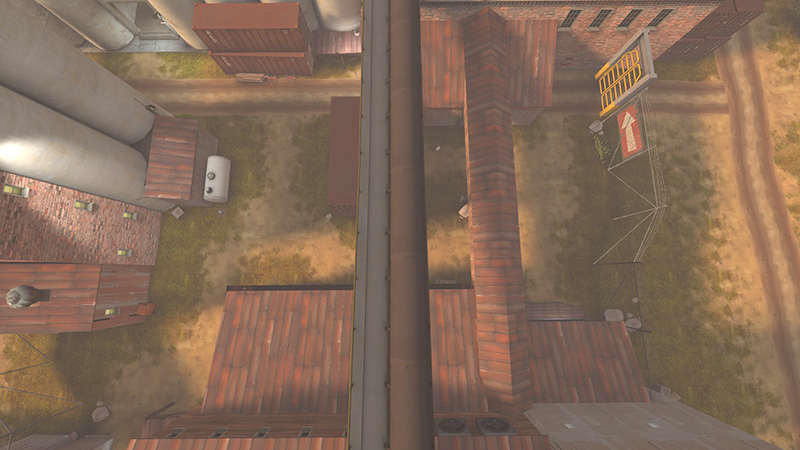
Choke Balcony Garage Left Yard Hut / Shack |
| Granary Pro — The Second Point, Left Yard View (RED) (BLU Perspective) |
|---|
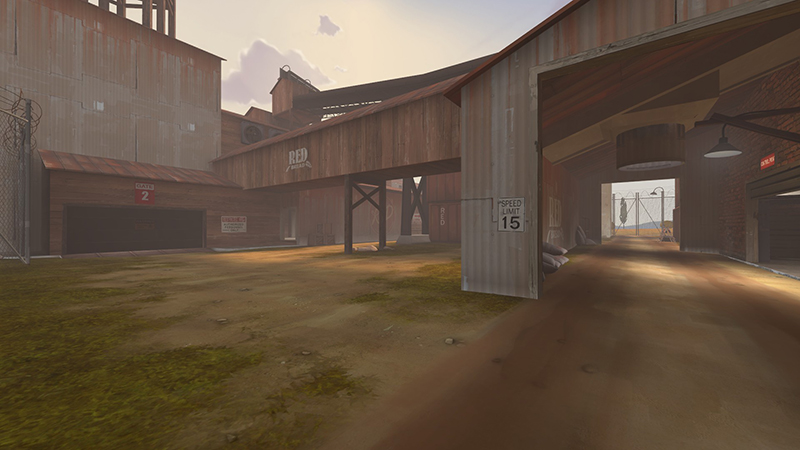
Dropdown Z Spiral / To Lunchbox Garage Left / Yard |
| Granary Pro — The Second Point, Inside View (RED) |
|---|

Top Left Stairs / Spiral / Lunchbox Lobby Garage |
Last Point[edit]
| Granary Pro — The Last Point (RED) |
|---|
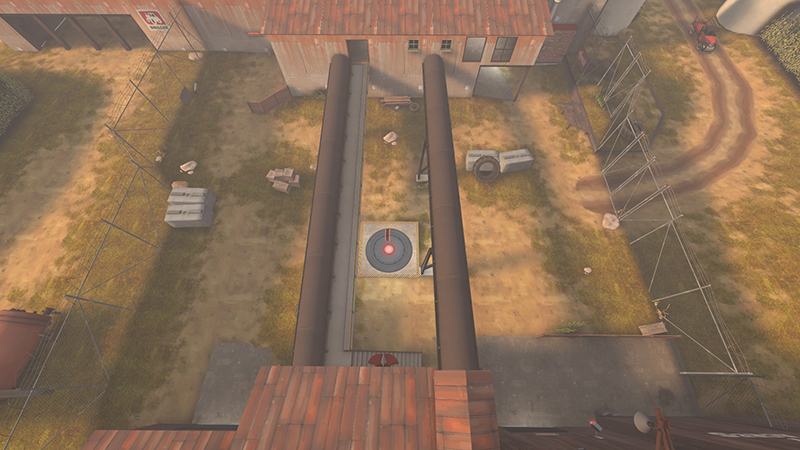
Top Right / Window Top Left Left Right Crates Tire Upper Pipe Lower Pipe Right Spawn Left Spawn Last |
External Links[edit]
| List of active competitive Team Fortress 2 maps | |
| 3CP | Warmfrost |
| 5CP | Badlands · Granary Pro · Gullywash · Metalworks · Process · Reckoner · Snakewater · Sunshine · Villa |
| Attack/Defend | Steel |
| King of the Hill | Airfield · Ashville · Bagel · Brazil · Cascade · Clearcut · Coalplant · Forge · Lakeside · Product · Stallone · Warmtic |
| Payload | Badwater · Borneo · Swiftwater · Upward · Vigil |
